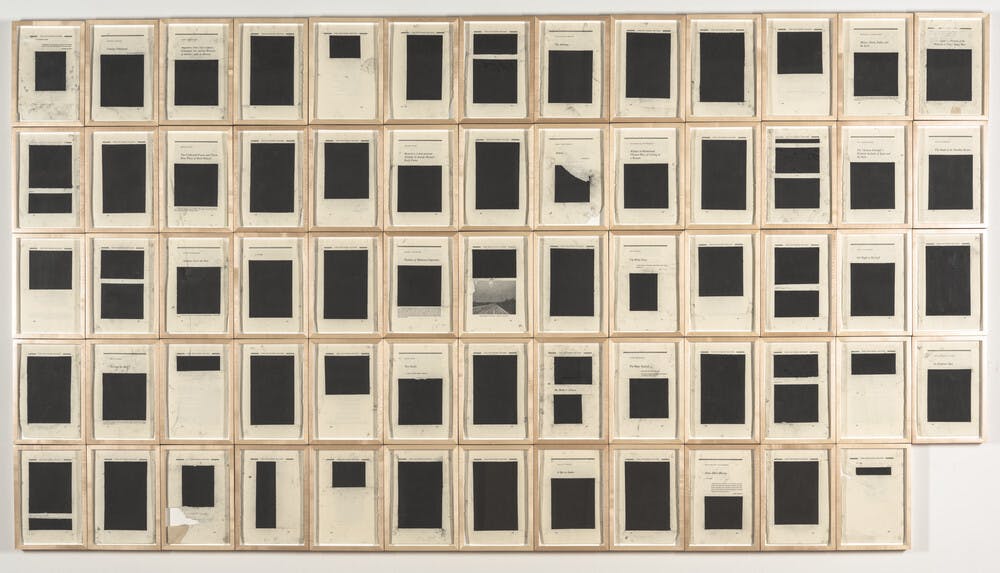Southern Review, 1987, 2014

- Artist
Bethany Collins
- Title
Southern Review, 1987
- Date
2014
- Medium
Charcoal on paper
- Dimensions
32 1/2 × 130 in. (82.6 × 330.2 cm)
- Credit line
The Studio Museum in Harlem; Museum purchase with funds provided by the Acquisition Committee
- Object Number
2014.12.2a-lll
Across Bethany Collins’s practice, language functions as her material. Southern Review, 1987 is composed of framed tearsheets from the literary magazine of the same name. Collins conceals the majority of passages with black ink, directing the viewer toward references of select cultural figures. The residual texts refer to Elizabeth Alexander, a renowned U.S. poet and cultural advocate; Derek Walcott, a Saint Lucian poet and playwright; and Carl Van Vechten, a literary figure and supporter of the Harlem Renaissance of the 1920s. The magazine holds no explicit focus on the U.S. South or race; however, Collins foregrounds the complicity of literature in racial structures by demonstrating the limited presence of figures and allies of the African diaspora seen across the black-and-white palette.
Southern Review, 1987, 2014

- Artist
Bethany Collins
- Title
Southern Review, 1987
- Date
2014
- Medium
Charcoal on paper
- Dimensions
32 1/2 × 130 in. (82.6 × 330.2 cm)
- Credit line
The Studio Museum in Harlem; Museum purchase with funds provided by the Acquisition Committee
- Object Number
2014.12.2a-lll
Across Bethany Collins’s practice, language functions as her material. Southern Review, 1987 is composed of framed tearsheets from the literary magazine of the same name. Collins conceals the majority of passages with black ink, directing the viewer toward references of select cultural figures. The residual texts refer to Elizabeth Alexander, a renowned U.S. poet and cultural advocate; Derek Walcott, a Saint Lucian poet and playwright; and Carl Van Vechten, a literary figure and supporter of the Harlem Renaissance of the 1920s. The magazine holds no explicit focus on the U.S. South or race; however, Collins foregrounds the complicity of literature in racial structures by demonstrating the limited presence of figures and allies of the African diaspora seen across the black-and-white palette.